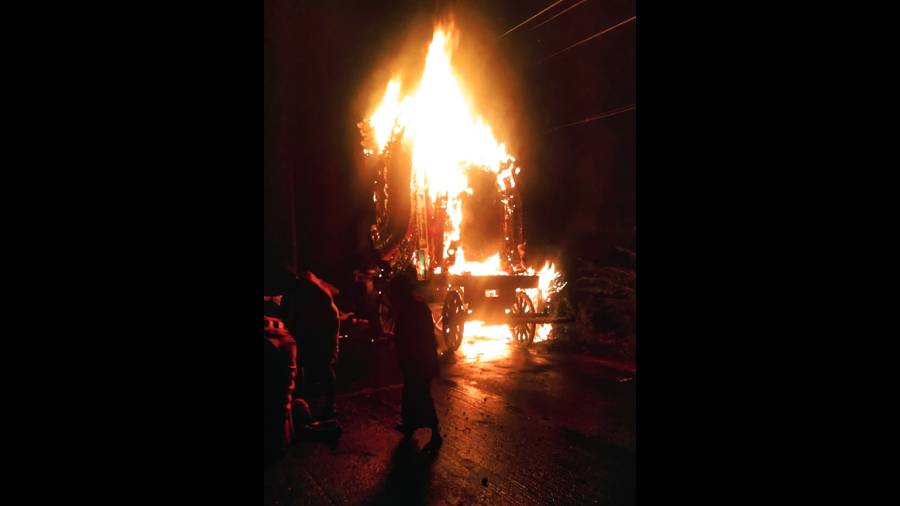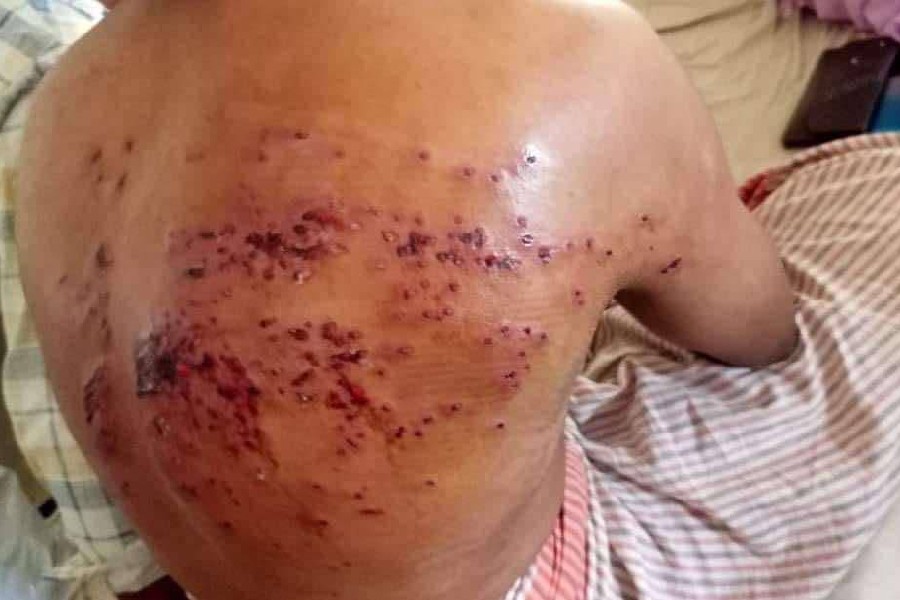At least 11 devotees were killed on Wednesday when a “temple chariot” in Thanjavur district of Tamil Nadu touched an overhead power cable, with the traditional wetting of the earth on the route likely to have helped conduct the electricity.
The chariot — which a minister clarified was actually a chapparam, a small wooden cart for carrying small idols in a procession — burst into flames while its occupants were flung off the vehicle, possibly from the impact of the electric current.
Eight men and three teenage boys — mostly those pulling the cart — were killed in the 3.30am accident while 17 were injured and are being treated in hospital, police said.
In keeping with tradition, water had been poured on the streets in Kalimedu, 350km from Chennai, through which the vehicle of the Appar temple was passing.
Some devotees had poured water on the cart too when it caught fire, while the mobile generator tied to the rear of the vehicle that was powering its lighting was still on, an eyewitness said.
“When some people poured water to douse the fire at a particular spot, that too conducted the electricity further and added to the chaos, injuring people,” the eyewitness said. The wooden cart, which had iron fitments, eventually burnt down.
A state electricity corporation official said: “During temple chariot processions, power supply is usually switched off in specified areas. Once the chariot crosses a particular street, supply is restored to it. Our field personnel would be on the spot for coordination.”
He added: “We are not sure if local electricity officials were notified in advance about this temple event.”
Police and district revenue authorities said the procession was passing through the Thanjavur-Boodalur Road when the temple vehicle faced some obstacle while negotiating a turn. When devotees tried to change its direction it came into contact with the overhead line.
While a chapparam is a small cart, this one had been fitted out with extravagant lighting, the embellishments apparently raising its height to more than 23 feet and setting the stage for the tragedy.
“People were thrown away, they just fell down. I could see a man lying here and another one there. The scene was frightening; we couldn’t understand what was happening,” a woman said.
Villagers said the generator tied to the cart could not be turned off.
“The organisers could not go near the generator, leave alone turning it off. Obviously no one was sure from where the electric current was coming and how it was being conducted. It was mayhem,” a villager said.
The onlookers listened to the screams of the injured helplessly, unable to do much as the current was still passing.
State electricity minister V. Senthil Balaji, however, said the power transmission had automatically snapped in the high-tension (33KV) overhead line since the top of the chariot “came within the electricity conduction range”.
“This accident may have happened as the generator continued to supply electricity to power the lighting,” he said.
Balaji said the top of the vehicle was foldable but did not bend when people were changing its direction. Had the top structure folded, the accident could have been averted, he said.
A senior police officer said: “Whether the chariot’s top actually touched the high-tension line is part of the investigation. An FIR has been registered and a probe is on.”
Chief minister M.K. Stalin has ordered a one-man inquiry commission.
Prime Minister Narendra Modi announced Rs 2 lakh each for the next of kin of the dead and Rs 50,000 each for the injured.
Stalin ordered a solatium of Rs 5 lakh each for the 11 bereaved families, Rs 1 lakh for each of the severely injured and Rs 50,000 each for the other injured.
Wednesday marked the Guru Puja of the seventh-century Tamil Shaivite saint Appar, also known as Thirunavukkarasar.











